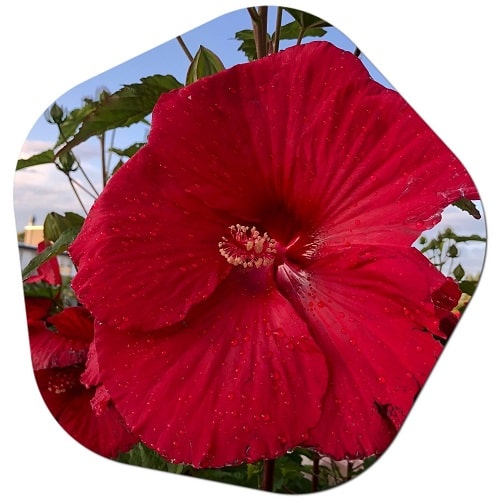What are the general characteristics of the flowering plants?
Flowering plants, also known as angiosperms, are a diverse group of plants that have several general characteristics that set them apart from other plant groups. Here are some of the key characteristics of flowering plants:
- Flowers: Angiosperms are characterized by the presence of flowers, which are specialized reproductive structures. Flowers are typically composed of petals, sepals, stamens (male reproductive structures), and pistils (female reproductive structures).
- Fruits: After successful pollination and fertilization, flowers develop into fruits. Fruits protect and contain seeds, aiding in their dispersal. Fruits come in various forms, such as berries, nuts, capsules, and more.
- Seeds: Angiosperms produce seeds, which are enclosed within the protective structure of a fruit. Seeds are essential for the propagation and continuation of plant species.
- Vascular Tissues: Flowering plants have well-developed vascular tissues (xylem and phloem) that transport water, nutrients, and sugars throughout the plant. This allows for efficient distribution of resources.
- Leaves: Most angiosperms have leaves, which are important for photosynthesis. Leaves come in various shapes, sizes, and arrangements, contributing to the diversity of this plant group.
- Alternation of Generations: Angiosperms, like other plants, undergo an alternation of generations life cycle. This involves a multicellular haploid stage (gametophyte) and a multicellular diploid stage (sporophyte), which alternate in the life cycle.
- Double Fertilization: Angiosperms are unique in their process of double fertilization. This means that two sperm cells are involved in fertilization: one fertilizes the egg to form the embryo, while the other combines with other cells to form the endosperm, a nutrient-rich tissue that nourishes the developing embryo.
- Diversity: Flowering plants are incredibly diverse and can be found in a wide range of habitats, from deserts to rainforests. They exhibit various growth forms, sizes, and adaptations that have allowed them to thrive in diverse environments.
- Reproductive Adaptations: Angiosperms have evolved a variety of reproductive adaptations to attract pollinators (such as insects, birds, and mammals) to aid in the transfer of pollen between flowers, promoting cross-fertilization.
- Rapid Growth: Many angiosperms exhibit relatively fast growth compared to other plant groups. This rapid growth contributes to their ability to colonize new areas and adapt to changing conditions.

These characteristics collectively make flowering plants one of the most dominant and successful groups of plants on Earth, with a remarkable diversity that plays a vital role in ecosystems and human societies.
What are the special characteristics of flowers?
Flowers are the reproductive structures of flowering plants (angiosperms) and have several special characteristics that make them unique. These characteristics are adaptations that help flowers attract pollinators, ensure successful fertilization, and facilitate the production of seeds and fruits. Here are some of the special characteristics of flowers:
- Colorful Petals: Many flowers have brightly colored petals that attract pollinators like bees, butterflies, and birds. The colors help these pollinators locate the flowers and aid in the transfer of pollen.
- Fragrance: Flowers often emit pleasant fragrances that attract pollinators from a distance. The scent acts as a chemical signal guiding pollinators to the flower’s nectar and pollen.
- Nectar: Nectar is a sugary liquid produced by flowers as a reward for pollinators. Pollinators feed on nectar while inadvertently picking up and transferring pollen from one flower to another.
- Pollen: Pollen contains the male gametes (sperm cells) of the plant. Pollinators pick up pollen from one flower and deposit it onto the stigma of another flower, facilitating fertilization.
- Sepals and Petals: Sepals are leaf-like structures at the base of a flower that protect the developing bud. Petals are usually brightly colored and serve to attract pollinators.
- Stamens and Anthers: Stamens are the male reproductive structures of a flower. They consist of a filament and an anther. The anther produces pollen, which contains the male gametes.
- Pistil and Stigma: The pistil is the female reproductive structure of a flower. It consists of the stigma, style, and ovary. The stigma is the receptive surface where pollen lands during pollination.
- Ovary and Ovules: The ovary contains ovules, which are structures that house the female gametes (eggs). After pollination and fertilization, the ovules develop into seeds.
- Cross-Pollination Mechanisms: Some flowers have adaptations that prevent self-pollination and encourage cross-pollination, which enhances genetic diversity. These mechanisms include staggered maturation of male and female reproductive parts, physical separation of these parts, and self-incompatibility systems.
- Flower Shape and Structure: Flowers come in a wide variety of shapes and structures, catering to different types of pollinators. For example, tubular flowers are often adapted for pollination by hummingbirds, while flat flowers are more suitable for butterflies.
- Temporal Patterns: Some flowers bloom at specific times of the day or during certain seasons to coincide with the activity patterns of their target pollinators.
- Special Pollination Partnerships: Some flowers have evolved specific relationships with particular pollinators, such as certain orchids that mimic female insects to attract males for pollination.
These special characteristics have evolved over time through a process of natural selection to maximize the reproductive success of flowering plants. The diversity of flower traits reflects the incredible variety of strategies that plants have developed to ensure their pollination and reproduction. Interesting features of flowering plants >>





